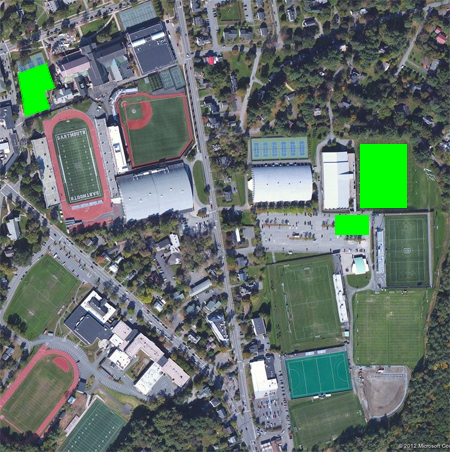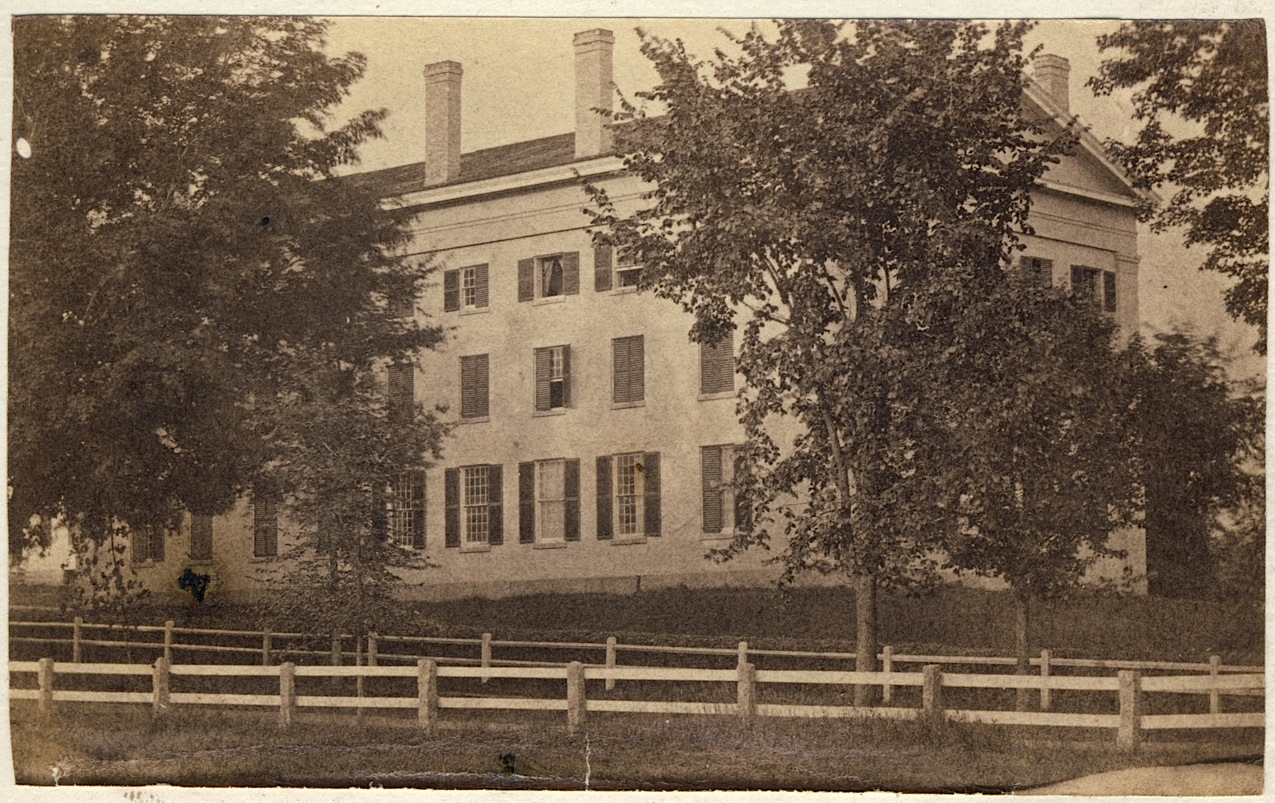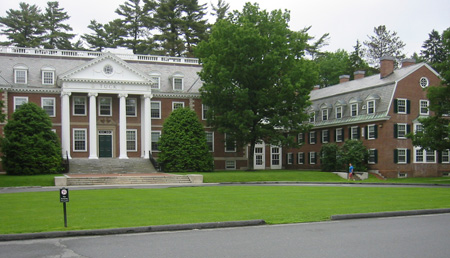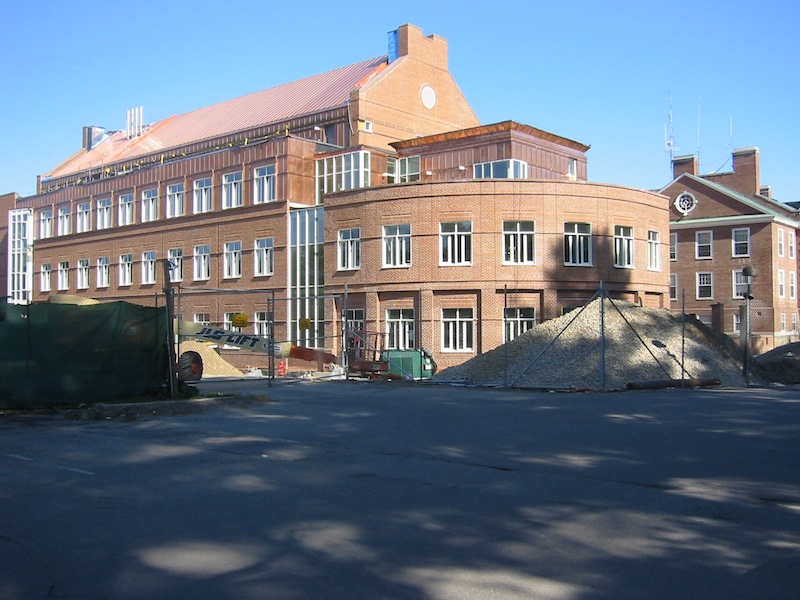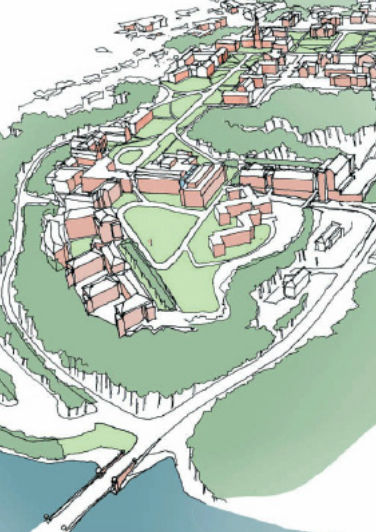The only notable building that the book fails to attribute to any architect is the Alpha Delta house, built during the early 1920s for the Alpha Delta Phi fraternity. The continuing expansion of the Google Books database has offered up an answer: Putnam & Chandler of Boston.1”Building and Construction News Section: New Hampshire,” The American Contractor 41:51 (18 December 1920), 52-53. The report states that work was already under way on the house by December of 1920:
Putnam & Chandler later designed the Theta Delta Chi house of 1926:
Other interesting gleanings:
–More than a decade before he designed the Church of Christ (the White Church) in Hanover (1935), Hobart Upjohn designed a church for St. Barnabas in Norwich.2”Building and Construction News Department,” The American Contractor 38:51 (22 December 1917), 36. Upjohn and St. Barnabas are covered in the Norwich Walking Tour.
–Psi Upsilon fraternity had William Lescaze, of Howe & Lescaze, design an unbuilt replacement house during 1931.3Lorraine Welling Lanmon, William Lescaze, Architect (Art Alliance, 1987), 112. The Modernist firm was erecting the PSFS Building (Wikipedia) in Philadelphia at the time.
–Prolific Hartford architect Louis Sheldon Newton designed a 40 x 60 house for a “Phi Sigma Nu” fraternity at Dartmouth.4”Society Buildings,” The American Contractor 37:23 (3 June 1916), 38. The name rings no bells, but the date suggests that this could be the demolished Arts & Crafts house of Kappa Sigma.
———–
| ↑1 | ”Building and Construction News Section: New Hampshire,” The American Contractor 41:51 (18 December 1920), 52-53. |
|---|---|
| ↑2 | ”Building and Construction News Department,” The American Contractor 38:51 (22 December 1917), 36. |
| ↑3 | Lorraine Welling Lanmon, William Lescaze, Architect (Art Alliance, 1987), 112. |
| ↑4 | ”Society Buildings,” The American Contractor 37:23 (3 June 1916), 38. |
